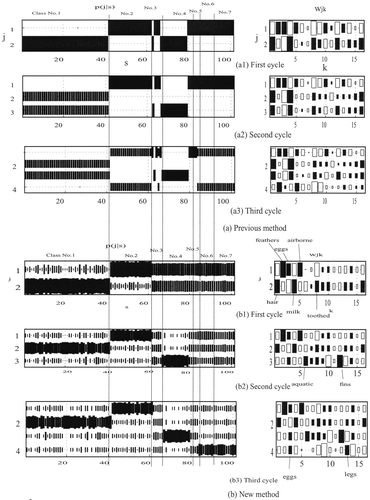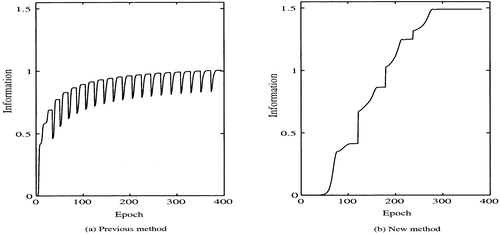Figures & data
Figure 1. A process of network growing by the greedy network-growing algorithm. Black circles denote newly recruited neurons, and dotted lines show connection weights into the new neurons.
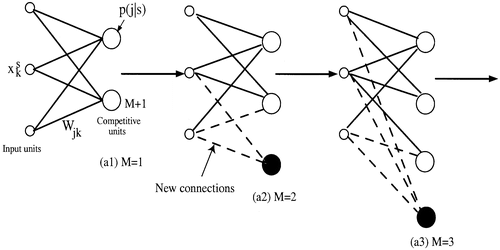
Figure 3. Competitive unit activation patterns p (j|s) and connection weights w jk by: (a) the conventional; and (b) the novel method. In competitive unit activations (left), black squares represent normalized competitive unit activations p (j|s), and their size denotes the strength of activations. In connection weights (right), we used the Hinton diagram (Hinton and Sejnowski Citation1986) in which black and white squares represent positive and negative connections, and their size shows the strength of connections.
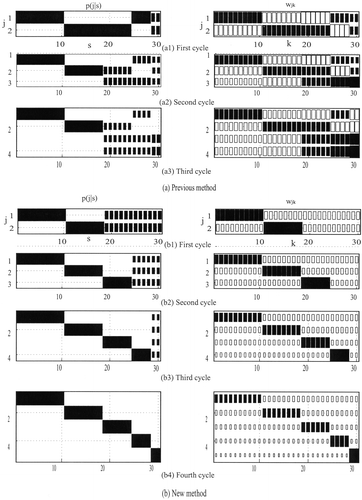
Figure 4. Information as a function of the number of epochs by: (a) the previous method; and (b) the new method.
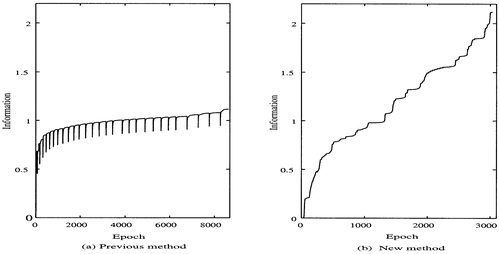
Figure 5. Competitive unit activation patterns by the previous method and the new method. Black squares in the competitive unit activations represent normalized competitive unit activations p (j|s), and their size denotes the strength of outputs. In connection weights, we used the Hinton diagram in which black and white squares represent positive and negative connections, and their size denotes the strength of connections.
